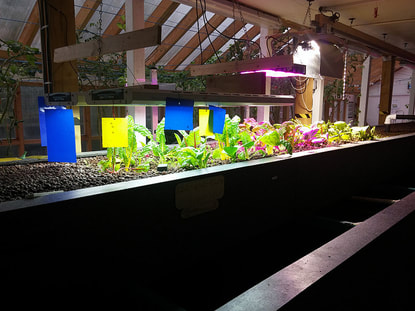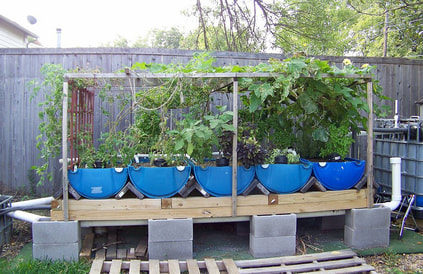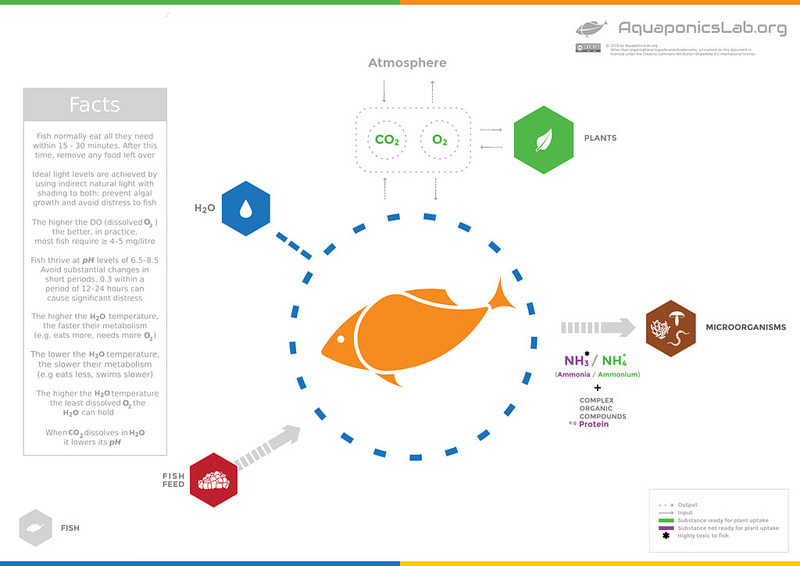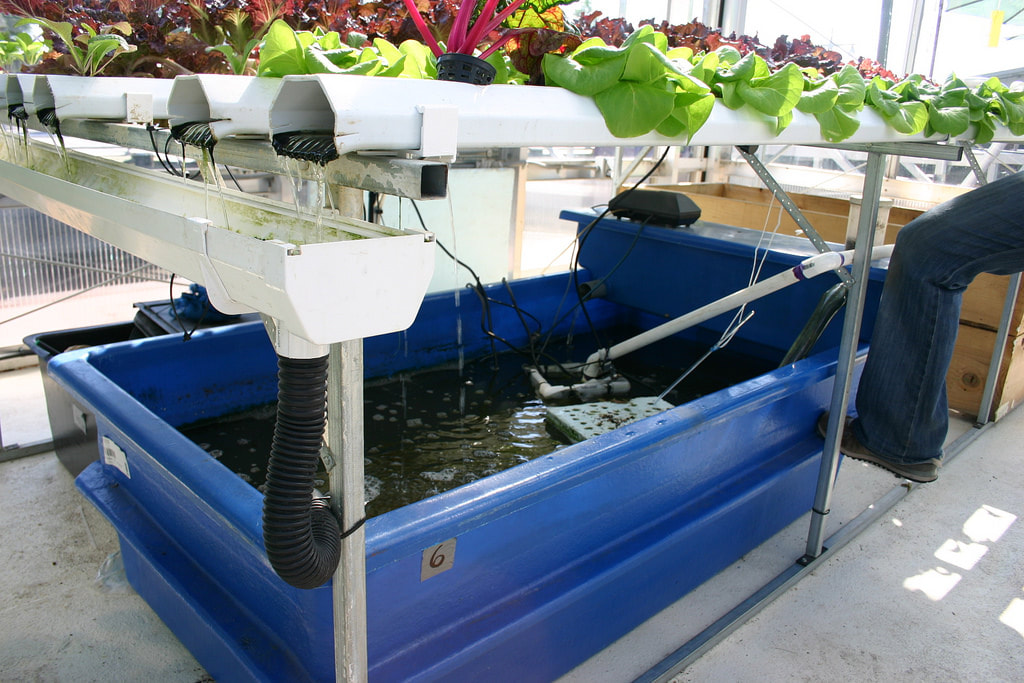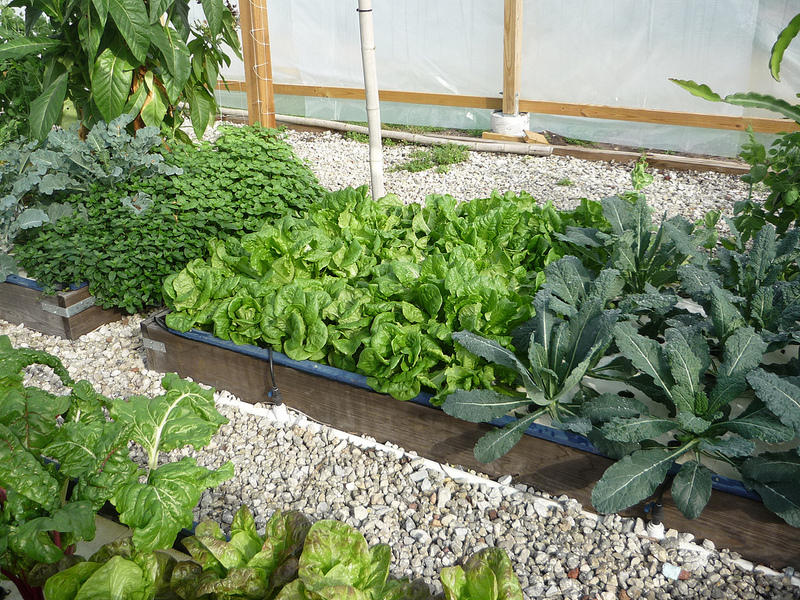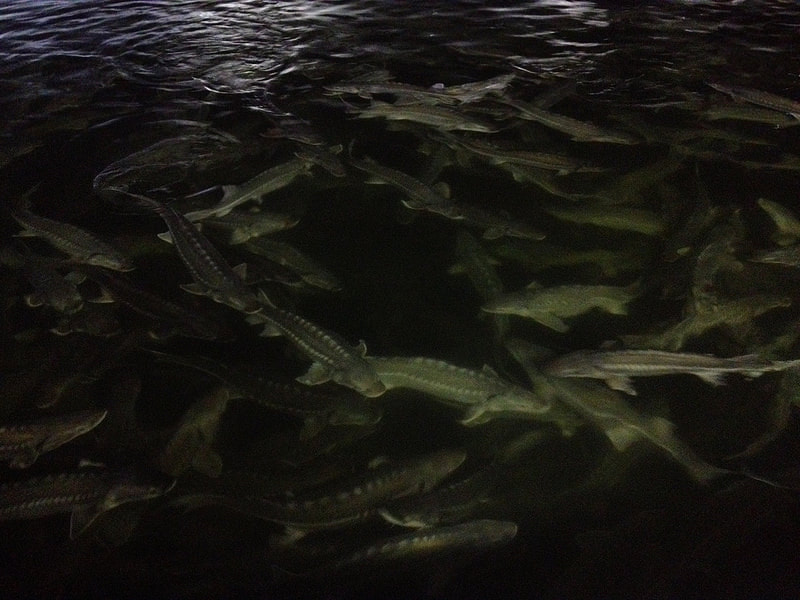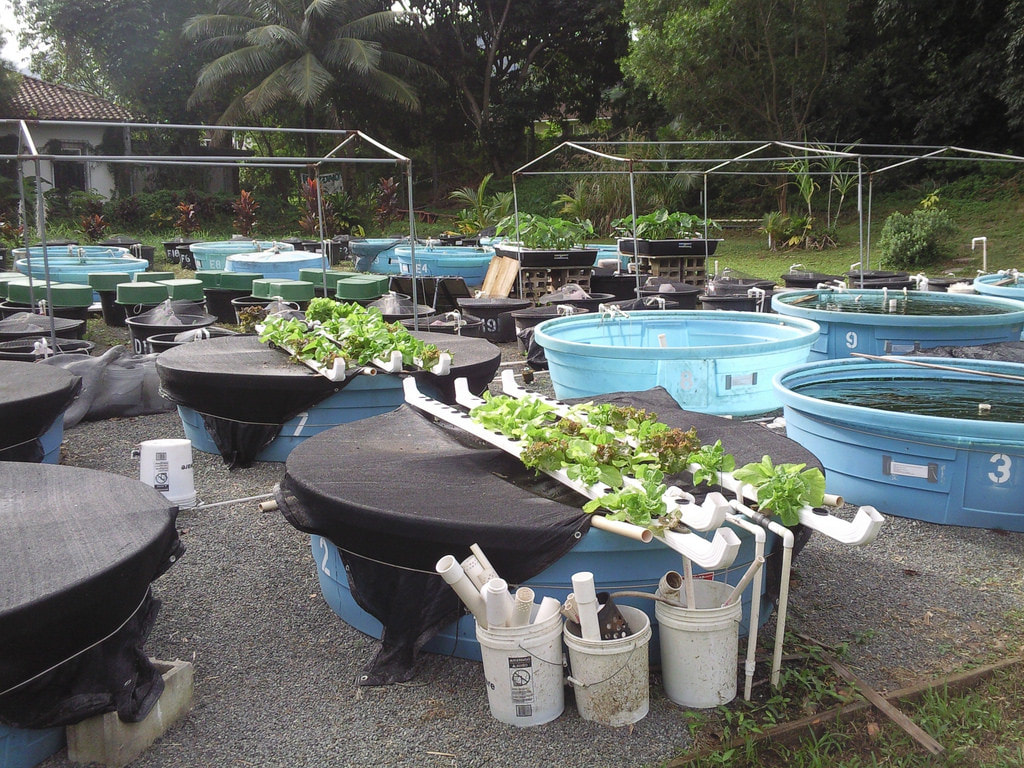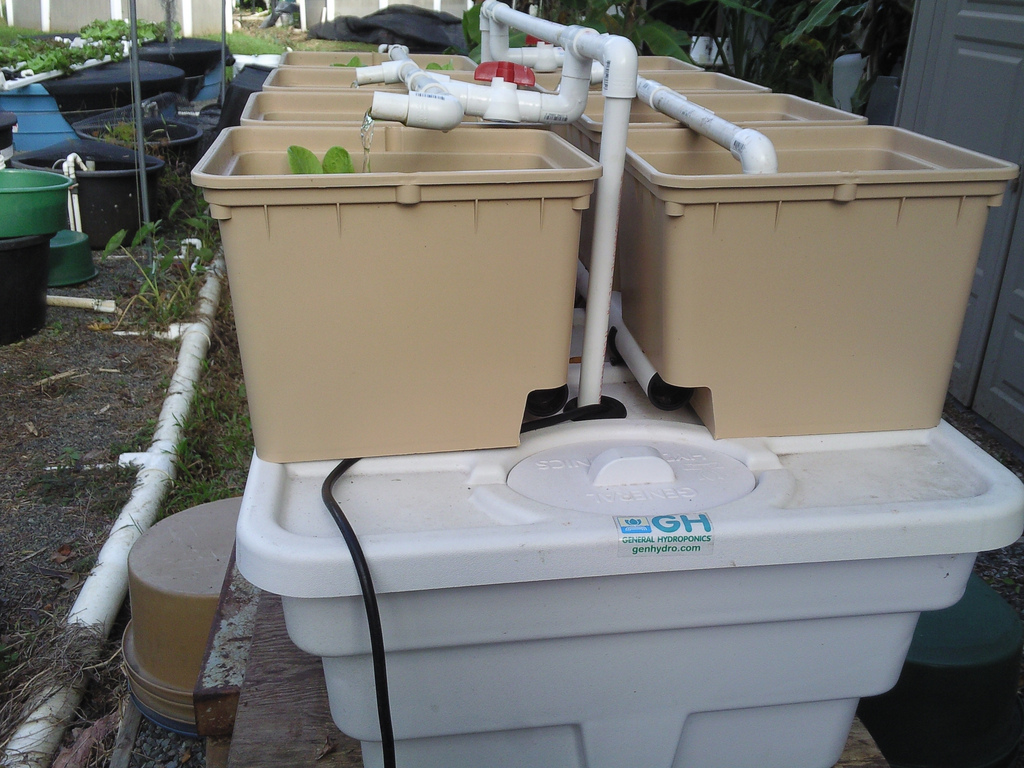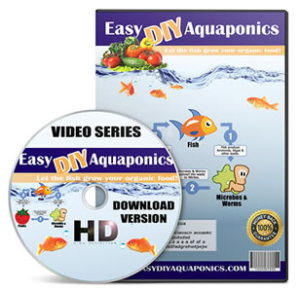Aquaponics
Aquaponics is quite simply the combination of Aquaculture and Hydroponics. Nutrients accumulated in the water from the farming of fish in Aquaculture systems flows through hydroponic growing beds feeding them.
In a nutshell Aquaculture is the farming of plants, fish, molluscs and shellfish from freshwater environments. This is a very efficient way of achieving sustainable food sources in an urban environment. Ecosystems submerged in water have the potential to provide more nutritional biomass for less ecological demand as the energy constraint of resisting gravity is absent. This is why ocean creatures such as whales reach such enormous sizes as the energy expenditure to move ones mass against gravity is mitigated by the weightlessness of being supported by water.
On the other side Hydroponics is a system that reduces the need for soil by growing crops in mineral rich water giving the plants everything they need to thrive. The solubility of plant nutrients in water means the plants have less work to obtain the nourishment they need to grow, this results in strong and fast growing crop rates. As plants in hydroponic systems are grown in door the ability to control other factors such as light and temperature mean they can produce food at least twice as fast as traditional crop production.
Aquaponics allow the efficient recycling of waste products and nutrients from aquaculture to feed plant based crops in hydroponic systems. The circulation of oxygenated water from fish and aquaculture pushes nutrient rich water through pipes to vegetable growing beds where the fertility is utilised and water cleaned. This creates an effective recycling symbiosis.
Even though the aquaculture process sounds complicated this concept is simply an extension of what occurs in nature. Water in natural systems is a transporter of nutrients with river basins being some of the most fertile landscapes. This model of producing food from aquatic life and recycling nutrients via a miniature hydraulic cycle feed crops and in turn purifying water is a scalable system which can be easily integrated into urban farming systems.
The ancient Chinese used a very efficient model for farming fish through the seasonal draining of rice paddy fields. At the end of the season they would drain the watercourses through baskets with 1 inch square holes. This would allow all the smaller fish free to grow on for next year while the larger fish would be harvested for the kitchen. Small water canals would run under the village homes where kitchen waste washed feeding carp and being recycled into the system. The idea of using water flows to transport nutrients can also be incorporated into landscape design in the form of swales and very useful within the practice of urban farming.
Aquaponic systems can be designed and built at home with a little research and resourcefulness. I have seen converted water butts connected with pipes for raising catfish that pipe nutrient rich water through raised vegetable growing tubs in polytunnels. The benefit of using complete aquaponic systems within greenhouses and polytunnels is you can grow more exotic fish and vegetables. It is important to remember these systems do need electricity to function but do not have to be 24 hour a day. This means you can utilise solar panels for your systems for a more sustainable source of urban food production for your urban farm.
There are a huge range of Aquaponic systems and accessories as well as learning resources available, check out some recommended resources below:
The DIY Aquaponics Guide is a condensed E guide on how to create simple and advanced Aquaponic systems with minimal costs and complications. One of the common problems with starting aquaponic systems is they usually expensive to get up and running. This manual teaches you everything you need to know to build your own systems for a fraction of the cost.
Aquaponics For Profit is 714 page step by step guide on every aspect of successful and profitable aquaponic farming. The book covers the most profitable fish species and vegetables types for efficient and successful Aquaponic Urban farming. Whether you wish to start a new business or feed your family Aquaponics for profit is a well written easy to understand text book of everything you need to know.
